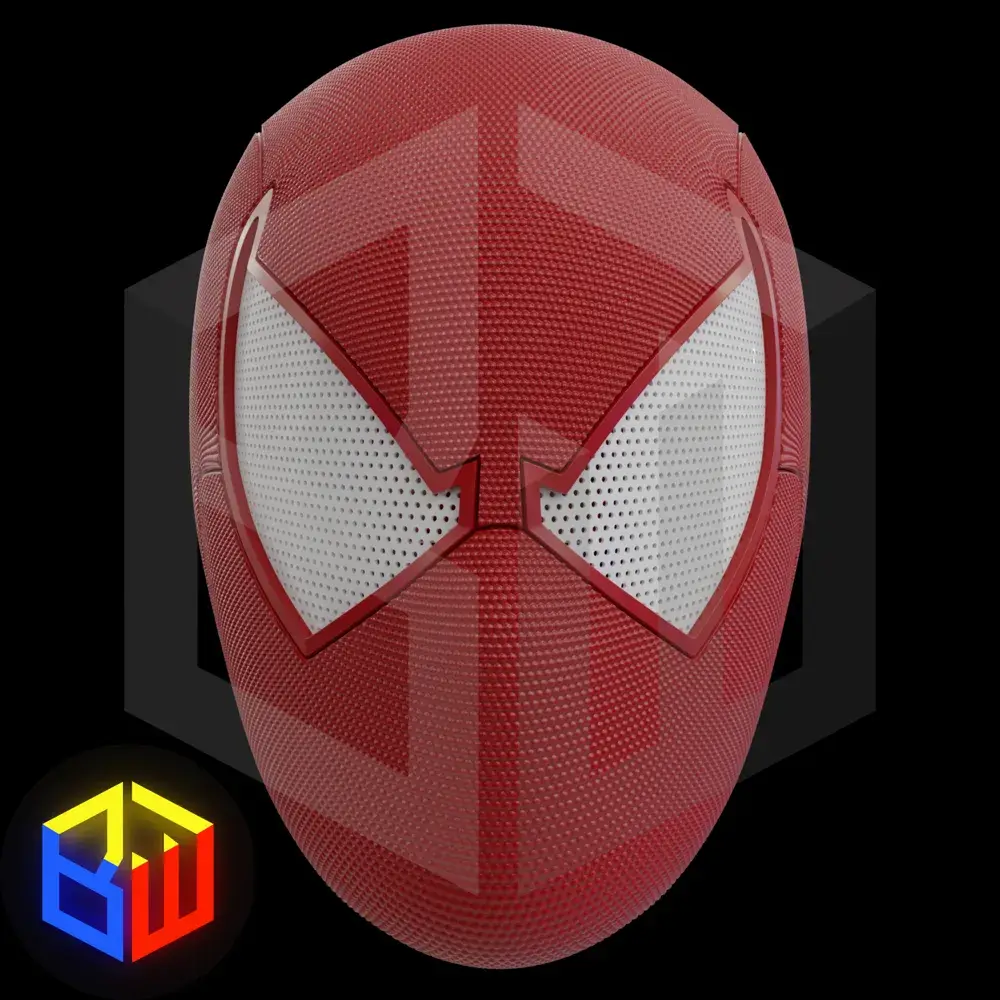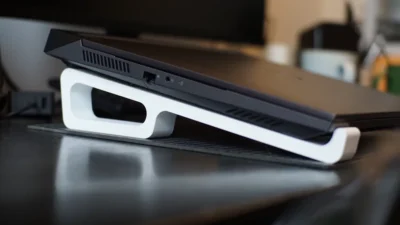In the vibrant world of cosplay, enthusiasts constantly seek ways to bring their favorite characters to life with authenticity and detail. 3D printing technology has emerged as a game-changer, offering unparalleled customization and precision for creating intricate cosplay props. Whether you’re aiming to craft a movie-worthy armor piece or an elaborate fantasy weapon, 3D printing delivers a level of detail that traditional crafting methods struggle to achieve.
Understanding the basics of 3D printing can open doors to endless possibilities. From selecting the right STL files to mastering the nuances of your 3D printer, there are essential steps to consider that can transform your prop from a digital model to a tangible centerpiece. Attention to printing techniques and post-processing methods will significantly impact the realism and durability of your creations.
With the power of 3D design at your fingertips, you can enhance your costume’s precision, making it not only visually striking but also functional for conventions and events. Knowing how to handle, maintain, and even personalize your printed pieces ensures they remain a lasting part of your cosplay inventory.
Key Takeaways
- 3D printing offers unmatched customization for cosplay props.
- Mastering printing techniques enhances realism.
- Proper handling and maintenance increase prop longevity.

Overview of 3D Printing in Cosplay
3D printing has revolutionized the way cosplayers design and create intricate props and costumes. By utilizing this cutting-edge technology, you can achieve high precision and customization, leading to realistic and detailed cosplay creations.
Advantages of 3D Printed Cosplay Props
3D printing offers cosplayers precise control over the shape, size, and detail of their props. Customization is a major advantage since you can design unique pieces that perfectly match your character’s aesthetic. This technology also enables you to reproduce complex patterns and intricate details that would be difficult to achieve by hand.
Durability and consistency are other benefits, as 3D printed items can be created repeatedly with the same high-quality output. Additionally, once you have a design, producing multiple copies becomes relatively easy and consistent, saving time over traditional crafting methods. This allows you to create multiple versions of a prop, either for practice, repair, or sale. Cost-effectiveness in the long run is significant since you can source and use materials economically.
Materials Commonly Used for 3D Printed Props
When creating 3D printed cosplay props, selecting the right material is crucial. PLA (Polylactic Acid) is a popular choice due to its ease of use and less warping, making it suitable for beginners. It provides a smooth finish and is biodegradable, aligning with environmentally conscious efforts.
ABS (Acrylonitrile Butadiene Styrene), known for its strength and durability, is another preferred material. It can withstand higher temperatures, making it ideal for more demanding applications. For intricate detail and flexibility, TPU (Thermoplastic Polyurethane) is utilized, offering a rubber-like texture. These materials come in various colors, allowing you to create vibrant props with minimal post-processing. Different materials cater to varying needs, providing you with options based on the specific requirements of your cosplay creation.

https://makerworld.com/en/search/models?keyword=Cosplay+Props
Designing and Modeling Cosplay Props
Designing cosplay props starts with choosing the right software for 3D modeling and ends with creating original designs. Doing so involves understanding the tools available and how they can assist in crafting detailed and unique creations.
Software Selection for Model Design
Choosing suitable software is crucial in 3D modeling. Blender is a popular, free option that offers robust features, perfect for intricate costume props. Tinkercad, another accessible choice, is user-friendly and suited for beginners. If you’re willing to invest, Autodesk Maya provides advanced tools for more detailed work.
Consider Fusion 360 for a combination of CAD and generative design. Evaluate each software’s capabilities, factoring in your skill level and the complexity of your designs. Ensure the software you select can export files compatible with your 3D printer for seamless production.
Creating Custom Designs
Creating custom designs requires creativity and precision. Begin by conceptualizing your prop idea with sketches or reference images. Use the software you selected to build a digital model, ensuring all measurements are accurate to avoid issues during printing.
Experiment with different features like texture mapping or sculpting tools to add realism and detail. You can also incorporate moving parts or modular pieces to enhance functionality.
Prototype with small test prints to verify dimensions and adjust the design accordingly. This iterative process refines your creation, transforming digital concepts into tangible costume props.

Printing Techniques and Considerations
Creating 3D printed cosplay props involves selecting the best printer, fine-tuning the print settings, and properly managing large pieces like armor. Your choices in these areas significantly impact the quality and durability of your final pieces.
Choosing the Right Printer for Cosplay Items
Selecting an appropriate 3D printer is a critical step. Consider the size and detail required for your costume props. Printers with a large build volume are suitable for producing larger items, reducing the need for assembly.
Pay attention to the materials your printer supports. For cosplay, PLA is easy to work with, while ABS offers more durability and can withstand higher temperatures, making it ideal for functional stronger parts. Nylon is flexible and strong, providing excellent resilience for wearable pieces. Evaluate your needs carefully to find the right balance between functionality and cost.
Optimizing Print Settings
To achieve high-quality prints, optimize your printer settings. The layer height affects the surface finish; lower layer heights yield smoother surfaces but take longer to print.
Adjust the print speed based on the complexity of your item. Slower speeds improve detail and reduce errors, while faster speeds are suitable for basic shapes. Material-specific settings, like extrusion temperature, also play a role. PLA requires lower temperatures than ABS or nylon. Properly tweaking these settings will enhance the overall efficiency and output of your cosplay items.
Handling Larger Props and Armor Pieces
Large items like armor pieces present unique challenges. Breaking them into smaller, more manageable sections can help reduce print failures and simplify post-processing.
Joining methods like interlocking pieces or dowel pins facilitate assembly. Consider the orientation during printing as it affects strength and detail. Pieces positioned to minimize overhangs can reduce the need for supports, resulting in less post-processing. Balancing structure and detail ensures that your final product is both aesthetically pleasing and functional.

https://makerworld.com/en/models/455009-sherlock-holmes-original-pipe?from=search#profileId-362517
Post-Processing for Enhanced Realism
Post-processing is key to making 3D-printed cosplay props look realistic. It involves steps like sanding for smooth surfaces, painting for added detail, and including functional elements to mimic real-life props or armor.
Sanding and Smoothing Surfaces
Start by sanding your 3D printed prop, a crucial step for achieving a realistic look. Begin with coarse-grit sandpaper (around 100-200 grit) to remove the most noticeable print lines and imperfections. Gradually work your way to finer grits, such as 400 and then 800, to create a smooth surface.
Wet sanding is beneficial as it reduces dust and provides a cleaner finish. Ensure to sand in a consistent direction to avoid creating new lines. For intricate areas or curves, smaller sanding tools or files can be useful. Sanding each layer properly will significantly improve the overall look of your prop.
Painting Techniques for a Professional Finish
Painting transforms a sanded prop into a lifelike piece. Primer is essential; it provides a uniform surface for paint to adhere to. Apply a thin coat and allow it to dry, then lightly sand to remove any imperfections. Choose paints that suit your prop’s material; acrylics are versatile and offer a range of finishes.
Layering is crucial. Begin with a base coat to cover large areas. Use dry brushing to highlight textures and details, which adds depth. Airbrushing offers smooth gradients and blends, ideal for realistic effects. Finally, seal your work with a clear coat, which protects the paint and enhances the finish.
Adding Functional Elements to Props
For added realism, integrate functional elements to your 3D-printed cosplay items. Moving parts, such as hinges or swivels, can recreate the functionality of real armor or props. Magnets are excellent for detachable elements, allowing parts to snap together seamlessly.
Lights can be embedded for dramatic effects on weaponry or armor. Ensure that any electronics are accessible for battery replacement or repair. For wearable cosplay items, consider weight distribution to ensure comfort during use. These enhancements can elevate a simple 3D print into a convincing replica.

Handling and Maintenance of 3D Printed Props
When handling 3D printed cosplay props, treat them with care to ensure they last throughout your costume events. These props can be durable, but it’s crucial to avoid excessive force, which could lead to cracks or damage.
For maintenance, regularly check for any visible wear or damage. If necessary, minor cracks or defects can be repaired with materials like epoxy or glue. Keeping a small maintenance kit handy can save you from the need for replacements or refunds later.
Store your props properly when not in use. Avoid direct sunlight, as it can weaken the plastic over time. A cool, dry place is optimal to prevent warping or deformation. For costumes that include wigs and dresses, ensure they are stored separately to avoid tangling or snagging.
Consider protective coatings for an additional layer of durability. These can include sealants or paint finishes that not only protect but also enhance the visual appeal. Regular touch-ups might be necessary to maintain appearance.
If your props are an integral part of a larger costume, such as armor or weaponry, ensure they are securely attached. You may need additional support to prevent accidental detachment during wear. Utilize strong adhesives that won’t damage the prop’s surface.
Incorporate routine checks after each use. This helps you catch any issues early on, potentially reducing future costs. By following these best practices, your 3D printed cosplay props will remain in excellent condition.

Logistics of Creating and Delivering Custom Cosplay Items
Managing the logistics of creating and delivering 3D printed cosplay items requires careful organization. It is crucial to understand both the shipping costs and customer service aspects to ensure a seamless process.
Calculating Shipping Cost and Time Frames
When shipping 3D printed cosplay items, accurate cost calculation is essential. Consider factors like weight, dimensions, and destination. Use online calculators from major carriers to get estimates and understand any potential additional fees.
Carrier Options: Explore options such as USPS, UPS, and FedEx for competitive rates. Compare based on speed, reliability, and cost.
Delivery time frames also need attention. Depending on the shipping option selected, delivery can range from a few days to weeks, particularly for international orders.
Packaging: Protect your items with sturdy packaging to prevent damage. Consider the use of bubble wrap and sturdy boxes.
Tracking and Customer Service for Orders
Providing order tracking enhances customer satisfaction. Assign tracking numbers promptly after shipping. This allows customers to monitor their package’s journey.
Methods: Utilize tracking services provided by the carrier, sending updates via email or through a customer portal.
Efficient customer service is the backbone of order fulfillment. Address queries regarding order status and delivery issues swiftly. Set up a system to manage customer inquiries, whether through email, phone, or a live chat service.
Communication: Keep open channels for customers to reach out. Acknowledge inquiries within 24 hours to maintain customer trust.
- 0shares
- Facebook0
- Pinterest0
- Twitter0



